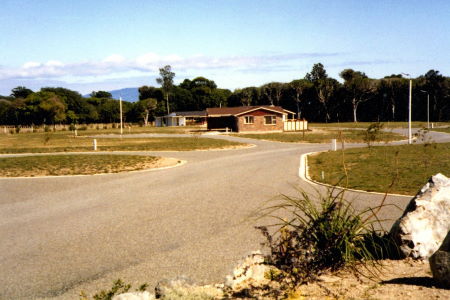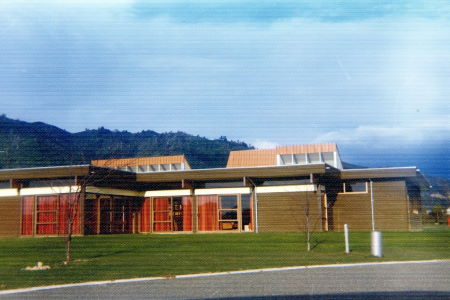The Parklands Trust Board always kept to the fore its basic objectives, which were to:
- organise accommodation for the elderly retired in attractive surroundings
- enable them to retain their independence
- care for their physical wellbeing
- encourage social, physical and mental activity
- relieve them of the worry and care often associated with old age
The underlying philosophy was that the scheme would be independent of subsidy or charity.
As the village took shape, many trees and shrubs were given to the Parklands Trust and by the middle of 1969 it was possible to erect fences and plant shrubs and trees along the southern and eastern borders where the original homes were built. Much of that work was carried out by board members and Rotarian friends. Services for the entire village were planned and carried out. At that time there was no sewage or stormwater reticulation in rural Waikanae. Consequently, three large septic tanks had to be built and every prospective house provided with stormwater sumps.

The village continued to evolve with the building of homes and the planting of trees and gardens. Nothing was wasted – the large rock garden at the entrance to the village was built from spoil obtained from other sources in the village. A workshop and hobbies room was built, together with another building for garaging and gardening equipment. This was named wharemahi, meaning “place of work”. Residents met in the hobbies room each Saturday morning for morning tea, a custom continued until this day, the venue now being the Parklands Social Centre.
By 1973 the village with its first four houses in Camellia Grove was officially opened by Governor General Lord Porritt. Mrs Peggy Eason was the first resident in the village – in Lloyd’s words, “a very courageous lady to commit to this new retirement scheme”.
Soon the need for a rest home became apparent and the Trust built an eight room facility inside the entrance, which was furnished and equipped by village residents and supporters. This was leased and operated on a commercial basis under the general supervision of the Parklands Trust. Following the building of Parkwood Lodge the rest home became two separate residential units.
During this period the Board was constantly concerned with the finances necessary to underpin the development of the village. Approaches were made to government (mainly without success) and to banks for commercial loans. Negotiating for finance was time consuming and stressful, and considerable gratitude is still owed to those members who had the financial skills to negotiate – in particular Ray Spackman. Those negotiations took place against the background of maintaining Parklands Trust’s objective of financial independence for all residents.

In addition, personal loans and outright gifts were made to the Parklands Trust by some Board members, including Chairman Lloyd Parker, who held this office from the Trust’s registration in 1969. As well as outright giving, a number of members gave personal guarantees, underwrote bank loans and made money available for houses to be built speculatively.
The Parklands Social Centre was completed and officially opened by Governor General Sir Denis Blundell in May 1975. Parklands as a village community had been created in a little over five years, during which time the Chairman and some Board members continued to review facilities for the care of the elderly, including in Australia. They found no better concept than Parklands and, together with the enthusiasm with which their concept of caring for aging persons was greeted, this gave them the confidence to proceed to the next stage. And so planning for the development of Woodlands began.
This section has been adapted from A Place called Parkwood, by Margaret Lythgoe, a history of Parkwood published in 2007.
